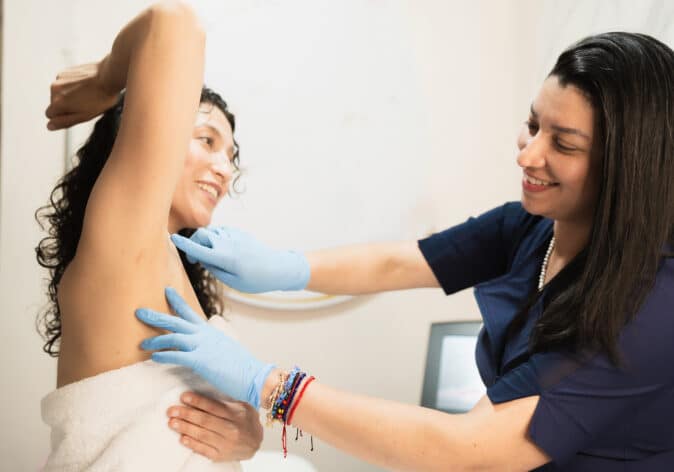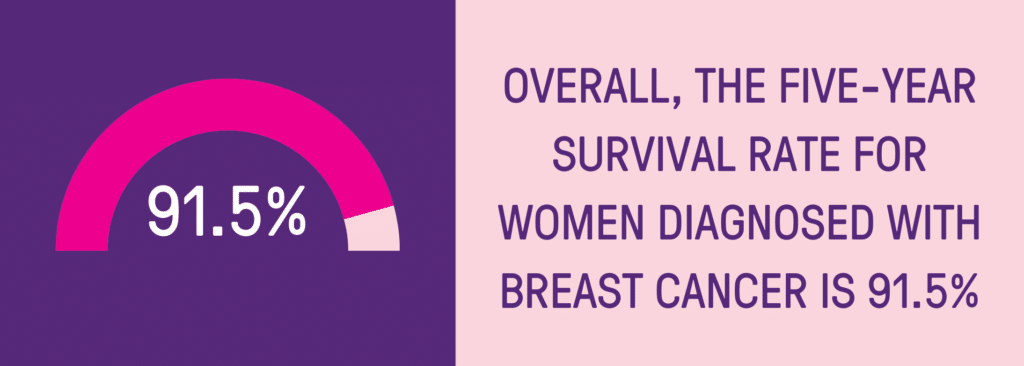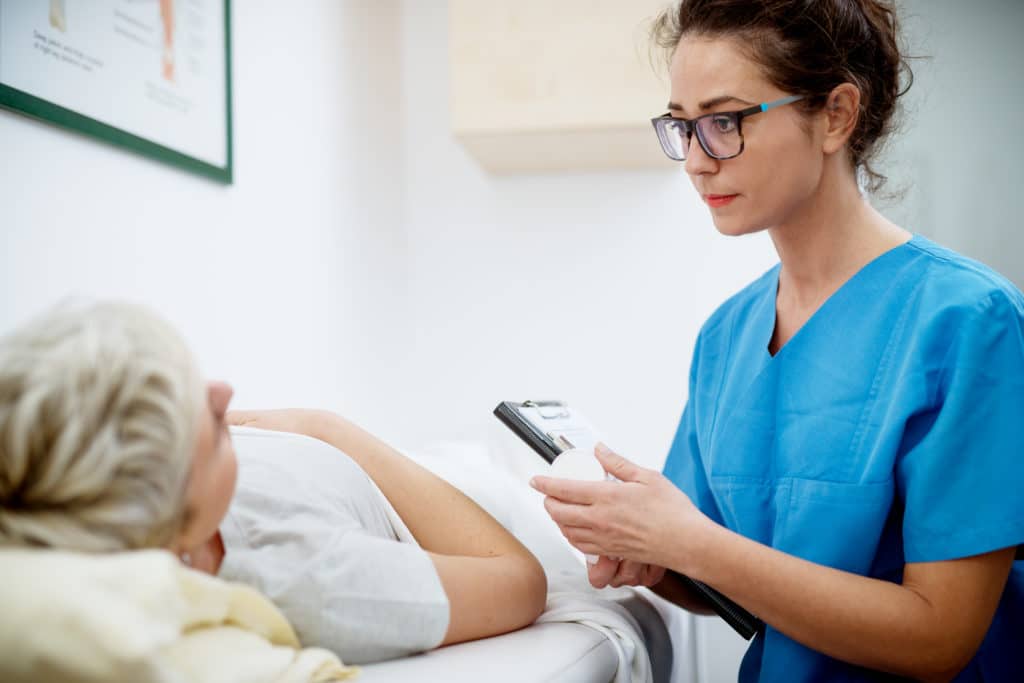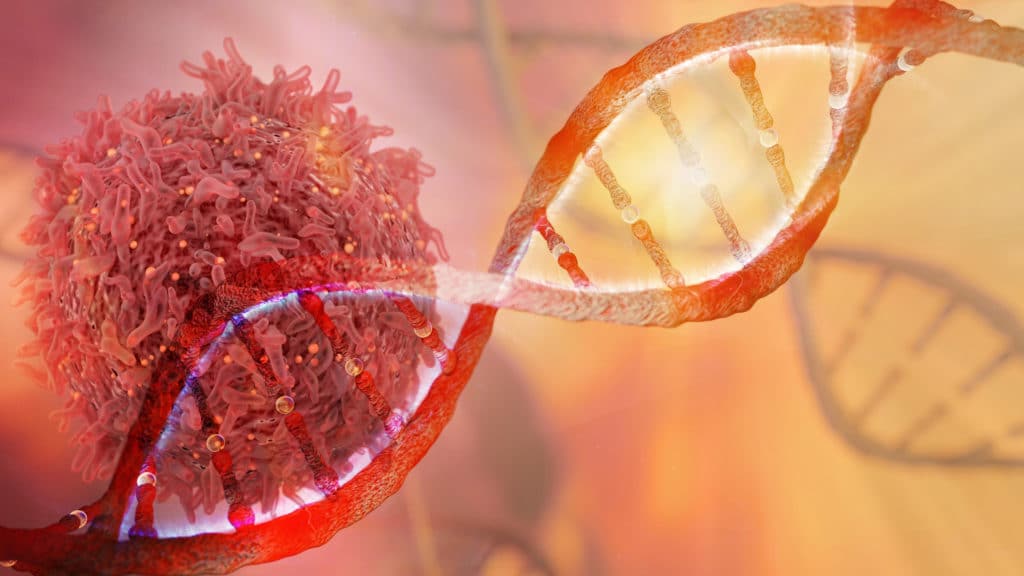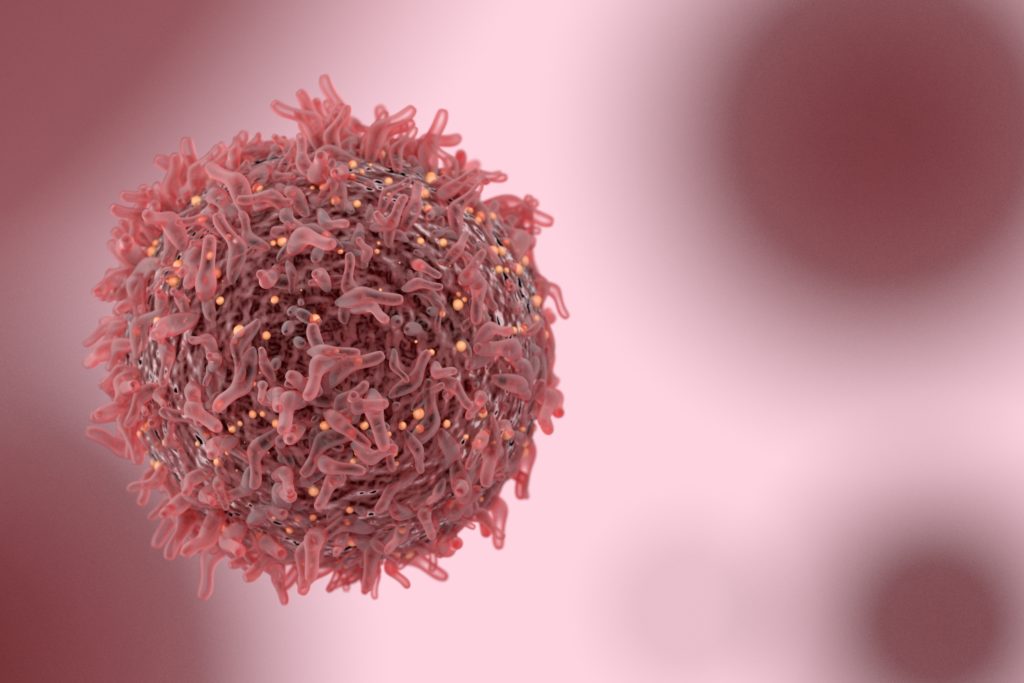Being Diagnosed With Breast Cancer At 31
Laura McCambridge is a project manager coordinating clinical trials in stroke and dementia at the Florey Institute of Neuroscience and Mental Health in Melbourne where she lives with her partner and their golden retriever puppy.
At 31, Laura found a lump in her breast and was shortly after diagnosed with breast cancer.
We spoke with Laura about her shock diagnosis, her decision to participate in the breast MRI evaluation study and her advice to other young women who have also received a diagnosis.
“My name is Laura. I’m 31 and from New Zealand originally but I’ve been living in Melbourne for the past 2.5 years,” she said.
“My connection with breast cancer is that in September of last year I found a lump in my breast and I went to the G.P.”
“He thought everything looked fine but sent me off for an ultrasound just in case.”
“The radiologists thought that it was probably fine as well but sent me off for a biopsy just to be safe again, and then when the pathology came back it was cancerous cells unfortunately.”
“So, since then, I’ve been walking through my breast cancer journey.”
“So, I had a lumpectomy and a sentinel node biopsy, and I was lucky that my love nodes were negative, but I still needed to have four cycles of chemo and then I was just about to get started with my radiation journey, but my gene markers came back that I had a mutation in the CHEK2 gene.”
“So, my surgeon thought that it would be best to go for a bilateral mastectomy, and I had that in February of this year, so now I’m kind of finished with my active treatment, which is exciting and just continuing with hormone therapy for 5-10 years now.”
Listen to the Podcast
At 31, Laura found a lump in her breast and was shortly after diagnosed with breast cancer. We spoke with Laura about her shock diagnosis, her decision to participate in the Breast MRI Evaluation Study and her advice to other young women who have also received a diagnosis.
Participating In The Breast MRI Evaluation Study
Laura was diagnosed with invasive breast carcinoma.
She underwent months of treatment, including a lumpectomy, four cycles of chemotherapy, a mastectomy and hormone therapy.
The Breast MRI Evaluation Study aims to find out the best way to use breast Magnetic Resonance Imaging (MRI) and if it will improve treatment options and patient outcomes, in women recently diagnosed with breast cancer.
Laura was offered a place in this study and didn’t hesitate to join.
“I heard about the Breast MRI Evaluation Study by talking to my surgeon, and I am, I work in research myself, so I was interested in being a participant seeing the other side of research.”
“So when I was meeting with my surgeon, I asked her are there any research studies available through this hospital and she put me in touch with the research coordinator of the Breast MRI Study.”
“I took it from there with her and there was a really positive experience being able to form a relationship with the research coordinator. We’re on really good terms texting each other, and she was checking in not just to follow up with me for follow up assessments but just to see how I was which was really nice.”
The Benefits Of Participating In A Clinical Trial
There are many benefits to participating in a clinical trial, such as the potential to access a new treatment and helping to further research into breast cancer. Another lesser-known benefit is that those who participate in a clinical trial often get more time with their treatment team.
“I have experienced quite a few benefits from being involved with the study, I had more one on one discussions with my surgeon, so I kind of felt like I had an extra layer of care, an extra layer of oversight by being involved with the study.”
“So not just being a patient but also being a participant, I feel like I got a little bit of extra care and I felt more involved with my treatment plan because I knew why I was doing what I was doing.”
“Research doesn’t always have direct benefits to the participant, but what you are almost always guaranteed is to have an involvement in contributing to the advancement of knowledge in the area and I think that’s really valuable and actually quite a cool thing to be able to say that you’ve been a part of.”
“The only way that we’re going to find better treatments and more effective treatments is by doing research, and the only way that we can do research is by people participating by donating, you know, their bodies and their time or by donating money if that’s an option for them.”
The Importance Of A Supportive Workplace and Hobbies
Laura continued to work throughout her treatment but said it wouldn’t have been possible if her workplaces were not as supportive as they were.
“Since my diagnosis, I have had to take some leave from work firstly after my initial surgery, then when I was going through chemo, I took the first week of chemo off when I knew I wasn’t going to be feeling very well.”
“The week following that, I was lucky enough that I was able to work from home, so I didn’t need to worry about the commute, and I didn’t need to worry about people being unwell near me when I was at a lower immunity.”
“And then in the third week, because I was having chemo every three weeks, when I was feeling a little better, I had the option of going into work if I did feel up to it, or just continuing to work from home or taking more sick leave if I if I needed to.”
“So, I was lucky enough to be pretty well supported by my work and by the girls in my team.”
Unfortunately for Laura, running is one of her biggest hobbies for both her physical and mental health. However due to her treatment, she hasn’t been able to “get out there and hit the pavement”.
“It just didn’t feel right for me at this stage, and I just wanted to listen to my body to see what would work best for me and running, wasn’t it unfortunately.”
“That was kind of tough that I wasn’t able to do the thing that helps me to deal with this when I was going through something like this, but it’s fine and I’m looking forward to getting back into exercise now that I’m finished active treatment.”
“I was, yeah, shocked and confused, it took a while to sink in but once I once I had kind of processed what the results were, I worked towards getting my treatment plan and once I had my treatment plan in place, that was when I started to feel better about everything because I could just see what was in front of me.”
Laura works as professional researcher at the Florey Institute of Neuroscience and Mental Health, and understands how valuable clinical trials can be.
“I am really passionate about research and I think it’s the only way that we can advance our knowledge in the area.”
“The Breast MRI Study was introduced to me and I really liked the sound of it because the idea is that at the moment the government are funding Breast MRIs for patients whose clinical examination doesn’t match what the mammogram says.”
“So for me as a younger woman, my lump didn’t show up on my on the mammogram so it was important to be able to have that extra layer of imaging with the MRI to create my treatment plan to see what was going on in there.”
“But this the funding from the government for breast MRI is limited and the government want to know well why are we doing this? Is this helpful? What are we finding from it?”
“The only way we know that is to do research and find out how it is affecting people’s treatment plans, to know if they should continue to fund it and for more people.”
“While you might not have the direct benefit to yourself, you know that you are going to be helping people down the track help other people in similar situations to yourself and their family members in there, and I think it’s important to contribute to breast cancer research either by being a participant if you are going through that yourself or financially if you are able to donate.”
Laura’s Hope For The Future
Laura participated in a clinical trial for herself and for the greater good of all breast cancer patients.
She said that although research doesn’t always have direct benefits to the participant, you are almost always guaranteed to contribute to the advancement of knowledge in that area.
“I definitely would recommend to other people to participate in clinical trials, it’s a way that you can have the extra contact with your doctor to be able to help other people in the future who are going through this”, said Laura.
“Unfortunately, research does take money to complete, so for my study it does, you know, MRIs aren’t cheap, and we need funding for participants to be able to have these MRIs.”



